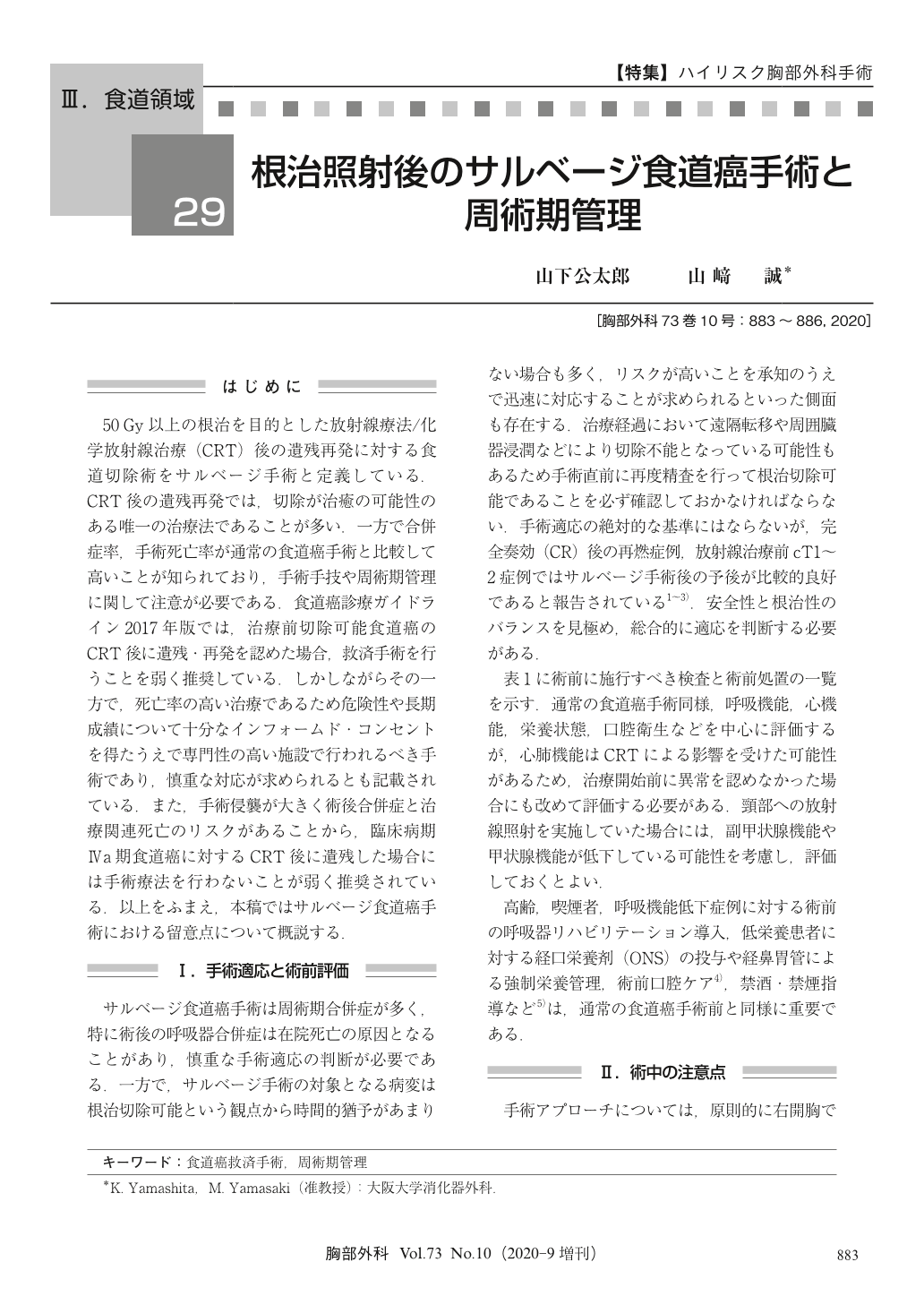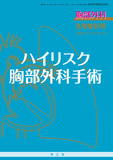Japanese
English
- 有料閲覧
- Abstract 文献概要
- 1ページ目 Look Inside
- 参考文献 Reference
50 Gy以上の根治を目的とした放射線療法/化学放射線治療(CRT)後の遺残再発に対する食道切除術をサルベージ手術と定義している.CRT後の遺残再発では,切除が治癒の可能性のある唯一の治療法であることが多い.一方で合併症率,手術死亡率が通常の食道癌手術と比較して高いことが知られており,手術手技や周術期管理に関して注意が必要である.食道癌診療ガイドライン2017年版では,治療前切除可能食道癌のCRT後に遺残・再発を認めた場合,救済手術を行うことを弱く推奨している.しかしながらその一方で,死亡率の高い治療であるため危険性や長期成績について十分なインフォームド・コンセントを得たうえで専門性の高い施設で行われるべき手術であり,慎重な対応が求められるとも記載されている.また,手術侵襲が大きく術後合併症と治療関連死亡のリスクがあることから,臨床病期Ⅳa期食道癌に対するCRT後に遺残した場合には手術療法を行わないことが弱く推奨されている.以上をふまえ,本稿ではサルベージ食道癌手術における留意点について概説する.
Definitive chemo-radiotherapy (CRT) in locally advanced esophageal cancer is associated with a high rate of loco-regional recurrence. In this condition, salvage esophagectomy may be considered as a therapeutic option. Despite the survival benefits of this combined approach, salvage esophagectomy remains a highly invasive procedure that confers a significant rate of morbidity and mortality and can adversely affect long-term quality of life. So careful evaluation is needed before the decision of the indication for salvage surgery. In order to prevent postoperative morbidity or mortality in patients underwent salvage esophagectomy, modifications in the surgical procedures, including minification of lymph node dissection and conversion to 2-stage surgery, are needed. Especially, it was necessary to pay attention to preserve blood flow of trachea. As aspiration pneumonia is sometimes fatal in patients after salvage esophagectomy, care to avoid aspiration is needed. Respiratory care is also essential during the follow-up period as well as perioperative period in patients who underwent salvage esophagectomy. Although salvage esophagectomy is considered a high-risk surgery, if indication for surgery was appropriate, that could be the only way which could prolong survival of locally advanced esophageal cancer patients after CRT.

© Nankodo Co., Ltd., 2020


